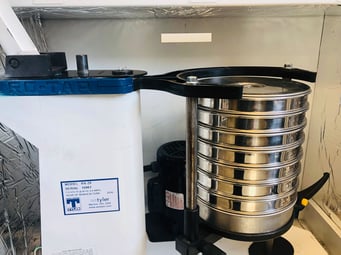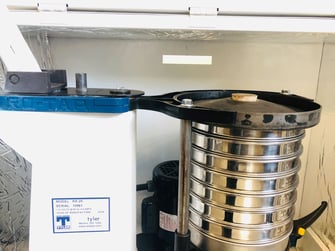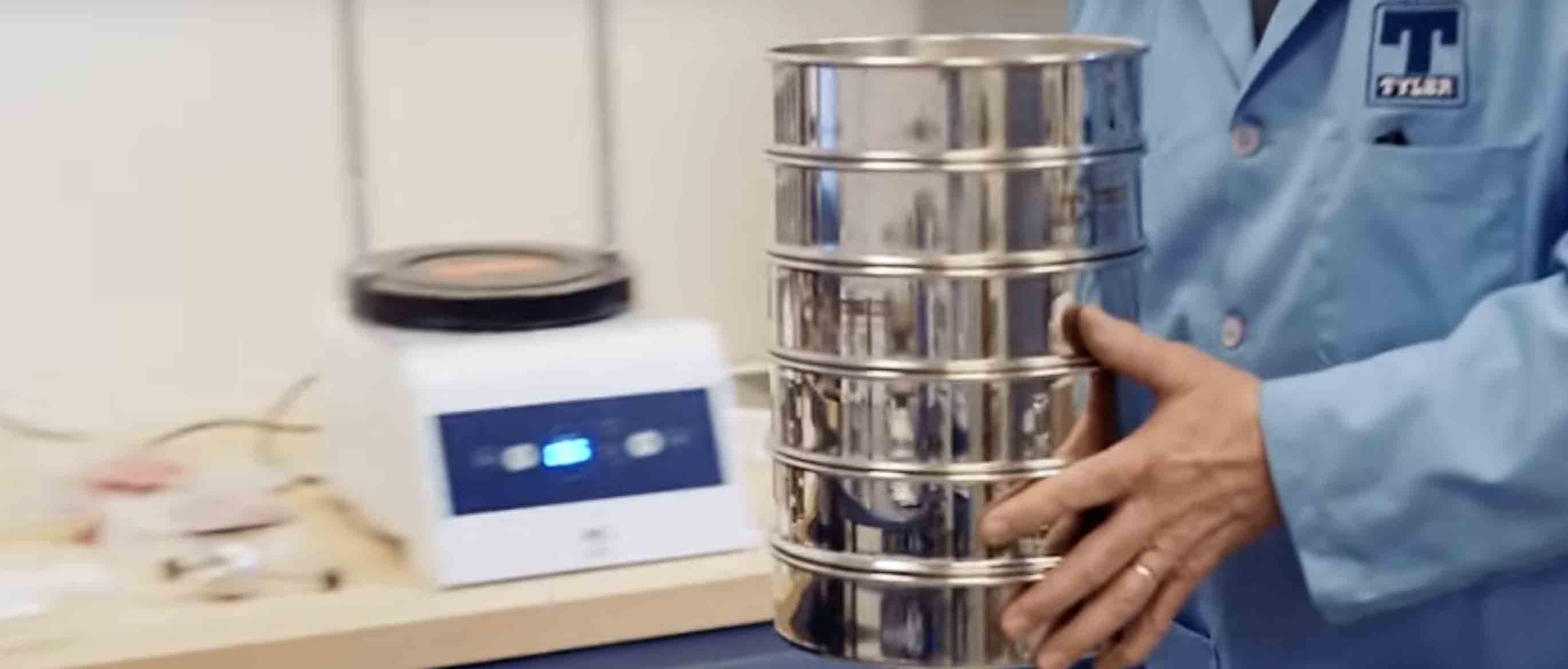How To Perform a Test Sieve Analysis (Preparation, Steps, & Tips + Video)
If the size of your material is essential to your process, then sieving is probably one of the most critical parts of your quality control system.
Test sieves and sieve shakers are used in industries all over the globe to analyze different types of material.
Sieves can seem like pretty simple instruments, but we get a lot of questions about the proper techniques and how to analyze results.
When it comes to quality control systems, accuracy and consistency is everything. We wrote this article to help you make sure you are getting the most out of your sieves in terms of procedures and analysis.
Preparing For Your Test Sieve Analysis
There are a few things you need to do before you begin the process of running a dry test sieve analysis.
First, you will need a representative sample of your material. If you need to know more about how to do this, Check out our article How To Prepare a Sample for Particle Size Testing.
For the next part of this process, you will need to know how to prepare your sieve stack. Different materials will require different opening sizes to give you an accurate particle size distribution. You can learn more about how to find standards in our article What are Particle Size Standards?.
The final step is to understand how long you need to run your sieve shaker. In general, this process will take around 10-15 minutes.
We have written an article in case you need help with this part of the process, How Long Do I Run my Sieve Shaker for?
Steps to Performing a Test Sieve Analysis
Now that we have the preparation done, let's get into the reason you came to this article in the first place, how to perform a dry sieve analysis.
- Place your sieve stack (without the sample material) in your sieve shaker.
- Pour your representative sample into the top sieve of your sieve stack. Try and pour your sample as evenly around the surface of the top sieve as possible.
- Once the representative sample has been poured in its entirety, place the test sieve lid on. This lid is used to prevent the sample material from falling off the edges and, in addition, is not durable enough to withstand the tapping of the sieve shaker hammer (performs tapping motion).
- A second, more robust lid (see below images) is placed on top of the test sieve lid to soften the impact.


5. Now you can drop the hammer into place.
6. You are now ready to turn your machine on and set your timer. Once the sieve shaker has
finished its cycle, it will turn itself off.
Analyzing Your Sample
Most often, you will be weighing the material retained on each sieve of the stack. This should add up to the weight of your representative sample.
The second and most common method for analysis, is to see what percentage of material passed through. An example of this is to determine the amount of material that passed through the top sieve, record it, then do the same with the material that passed the second. Continue this process until you make your way down the sieve stack.
You can input your weight distribution using our W.S. Tyler software. The software provides results for weight retained and, in return, will provide the percentage retained. In addition, it will also give you a particle distribution curve. The price of the software is $38.72.
Cleaning and Maintaining Your Sieves
To make sure this process continues to be accurate over time, it is important that you clean and maintain your sieves.
Be sure you inspect each sieve for damage to the wire or the epoxy. The second is to make sure you clean your sieves properly after each use.
For more details on how to clean and maintain your sieves, check out our article on Test Sieve Maintenance.
Master Test Sieves
To ensure you continue to yield accurate results over time, it is a good idea to have two sets of sieves. One set is the master set and the other is the working set.
Master sieves are not to be used on a daily basis. They are to be used to make sure your working sieves are still in spec. It is essentially an insurance policy that allows you to check the condition of your working sieves in-house and ensure they are performing as they should.
All testing is performed on your working sieves, and the results are compared to the results given by your master sieves. Typically your master sieves are certified to your industry standard and tested once a year to be sure they are up to standards and spec.
These need to be maintained and checked over to ensure no damage or blocking has occurred.
So, how long do the working sieves last? This is a tough question. When working with a more abrasive material, such as shot, grit, or sand, you will want to check your sieves weekly. If you're working less abrasive material like powders, plastic, or coffee, for example, sieves can be checked monthly.
Of course, this all depends on the applicable quality standards.
To Sum It All Up
If you take nothing else away from this article, we hope you remember that consistency is everything when it comes to the world of particle analysis.
It is important to streamline your process and take care of your instruments to make sure you are getting consistent results every time. Consistent results help to ensure quality standards are being maintained.
Whether you are using test sieves already at your company or you just wanted to learn more about them, we hope this article gives you a better understanding of how to properly carry out a test sieve analysis.
If you have any other questions about test sieves or anything else particle analysis related, don’t hesitate to contact our team.
Want all the latest industry trends and innovations sent directly to your inbox? Subscribe to our monthly newsletters today!




